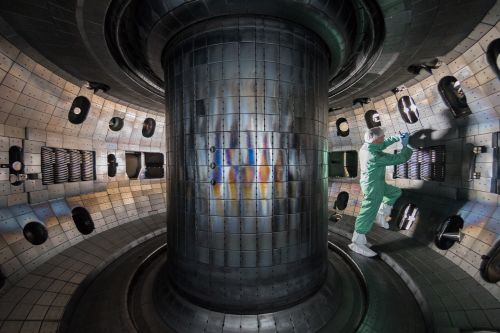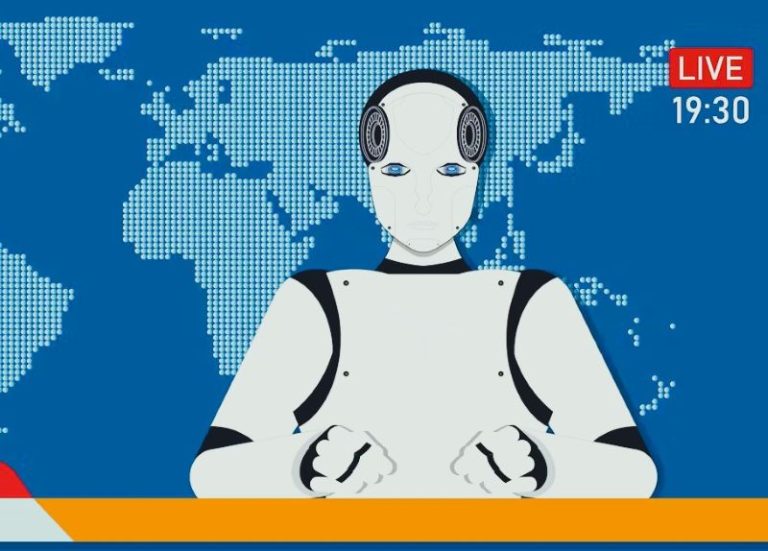

AI models are only as sound as the data used to train them. A miscalculation in plasma conditions could still trigger failures with catastrophic costs.

By Matthew A. McIntosh
Public Historian
Brewminate
A Dream Deferred, Reignited
For more than half a century, nuclear fusion has lived on the knife edge between scientific aspiration and cultural punchline. The idea of bottling starfire on Earth, an endless source of clean energy, always sounded too good to be true. And for generations, it was. Experiments failed. Reactors sputtered. Funding dried up. The joke that fusion was always “thirty years away” became part of the lore, repeated with weary smiles by the very physicists laboring to make it happen.
Yet the landscape is shifting. Not because the underlying physics suddenly grew simpler, but because the tools guiding scientists have evolved. Artificial intelligence, once dismissed as a computational assistant for data wrangling, is beginning to act as something else entirely: an accelerator. It is changing not just how fast calculations run but how research itself is imagined.
And perhaps most importantly, it is eroding the credibility gap that has haunted fusion for decades.
When a Machine Knows Before You Do
The National Ignition Facility in California is famous for spectacle, 192 lasers aimed at a capsule the size of a peppercorn, delivering more energy than the entire U.S. power grid consumes in a fraction of a second. In 2022, one of those shots made history. The pellet briefly burned hotter than the sun’s core, and for the first time, a laboratory experiment released more fusion energy than the lasers had consumed.
But behind the headlines was a quieter revelation. A deep-learning model had already “called it.” With 74 percent confidence, the AI predicted ignition had been achieved before humans finished parsing the torrent of experimental data. Traditional supercomputers, even with their vast processing power, had been slower and less certain.
That prediction wasn’t just technical trivia. It suggested a shift in authority. Scientists accustomed to treating AI as a subordinate tool now had to confront its ability to outperform their most trusted instruments. How do you design experiments when the model can tell you the likely outcome in advance? How do you justify spending millions of dollars on each shot when algorithms can flag failures before they unfold?
It is unsettling to consider, but also liberating. In a field defined by scarcity, scarcity of fuel, money, and time, an AI that can separate the promising from the futile may prove invaluable.
Shadows in the Plasma
If predicting ignition feels like clairvoyance, another AI tool has proven itself as a cartographer. Researchers at Princeton Plasma Physics Laboratory and Oak Ridge National Laboratory have trained HEAT-ML to detect what they call “magnetic shadows.” These are regions inside the swirling plasma of a reactor where conditions are stable enough for reactions to persist.
Mapping those shadows once took thirty minutes of grueling computation. HEAT-ML does it in milliseconds.
That may sound like a technical upgrade, but in a reactor environment it is transformative. Thirty minutes means frozen data, static models, and after-the-fact corrections. Milliseconds mean real-time adaptation. Milliseconds mean reactors that can respond like living systems rather than fragile contraptions teetering on failure.
The leap recalls the difference between watching photographs of a storm and standing inside it with instruments that update every instant. For the first time, researchers can envision reactors designed not around static expectations but around adaptive intelligence, learning and adjusting in tandem with the plasma itself.
Breaking the Myth of the Infinite Delay
Fusion has always been bound as much by narrative as by physics. Public trust eroded not because the science was unserious, but because the delays felt endless. Politicians withdrew funding. Environmentalists turned their hopes to solar and wind. Citizens stopped listening.
AI is challenging that cycle. Its contributions are not promises deferred to future decades; they are measurable accelerations in the present. A computation that once devoured half an hour now resolves in the blink of an eye. A prediction once requiring supercomputer months now arrives in minutes. The thirty-year joke may finally have met its expiration date.
Of course, skepticism lingers. Some researchers warn against over-interpreting the gains. Predicting ignition is not the same as achieving it repeatedly. Mapping shadows is not the same as keeping a reactor burning stably for days or weeks. Yet in the culture of fusion, where doubt has become habitual, even modest breakthroughs can feel revolutionary.
What We Risk and What We Hope
The danger is clear: overconfidence. AI models are only as sound as the data used to train them. A miscalculation in plasma conditions could still trigger failures with catastrophic costs. There is also the risk of repeating history, of declaring a new dawn too early, only to retreat into another cycle of disappointment.
And yet something feels different. AI is not promising miracles decades away. It is shaving hours, days, months off the practical grind of experiments right now. It is collapsing research timescales in ways that human ingenuity alone never could. That is why even the cautious voices acknowledge that the field’s tempo has shifted. Fusion may still be distant from lighting the world’s cities, but for the first time, its cadence no longer sounds like stalling. It sounds like quickening.
Originally published by Brewminate, 08.27.2025, under the terms of a Creative Commons Attribution-NonCommercial-NoDerivatives 4.0 International license.


